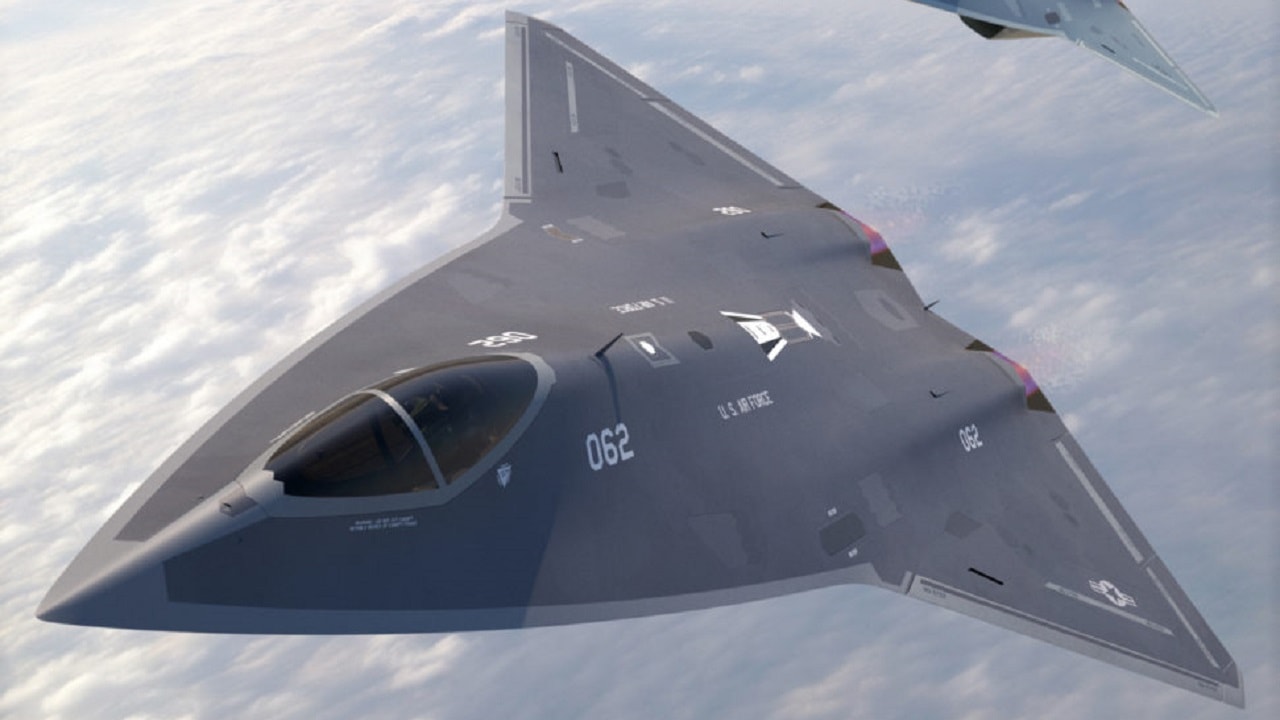NGAD and More: What could the future fighter of the US Air Force and Navy look like and accomplish? If you were put in charge of developing America’s next air superiority fighter—an aircraft purpose-built to dominate the skies over even the most hotly contested warzones of the 21st century—how would you go about doing it? What systems, capabilities and cutting-edge technologies would you build your new fighter around?
That’s a question that was actually posed to America’s premier defense contractors in recent years under secretive developmental programs like the Air Force’s Next Generation Air Dominance (NGAD) and the Navy’s F/A-XX effort.
Unlike the F-35 Joint Strike Fighter, which has been broadly criticized for trying to meet the needs of too many disparate services in its budget-busting design, these new fighters are being developed under an umbrella of independent cooperation and a very different acquisition process. For starters, both the Air Force and Navy are expected to field different aircraft, though they’ll almost certainly share some subsystems developed in cooperation with one another under the NGAD banner. So whatever platform emerges as America’s next runway-queen air superiority fighter will almost certainly not also be expected to fly carrier duty as well.
Editor’s Note: The following article is strictly hypothetical, but all programs and technologies discussed are publicly disclosed.
NGAD and F/A-XX are real fighter programs in development
There’s been a great deal of conjecture surrounding the capabilities and technologies we’ll find in America’s next fighters, but while some of this conjecture appears to be substantiated by official statements, most hard details have remained elusive. You can read more about the NGAD program in our previous coverage of it here.
So, as a thought exercise, I decided to start designing my own air superiority fighter that could replace the legendary F-22 Raptor as the new reigning king of the skies, assembling the latest and most advanced systems that are currently either being fielded or are in development and could potentially find their way into a fighter fuselage in a reasonable timeframe. In other words, because this new jet will need to start flying within the next 5-10 years, holding out for containerized cold fusion or a fully dual-cycle scramjet propulsion system for hypersonic flight isn’t all that reasonable… but advanced jet engines like GE’s XA100, which hasn’t found its way into a fighter but is currently being tested, are fair game.
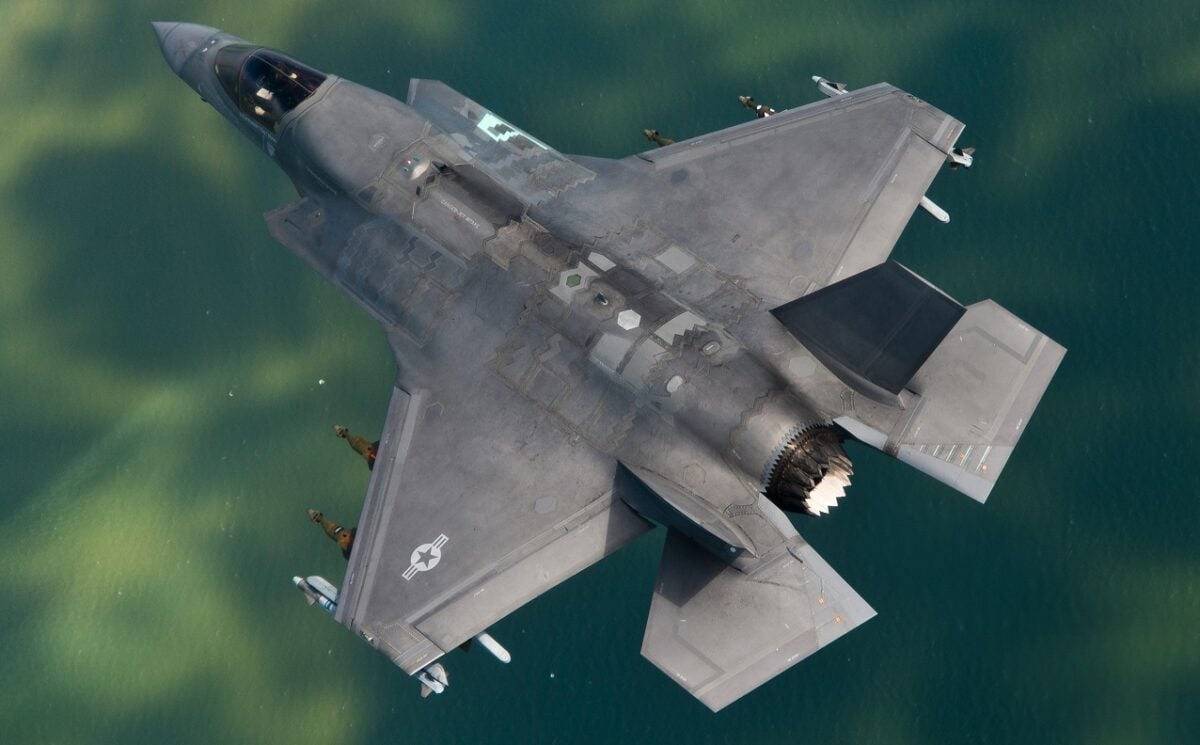
Image of F-35 Stealth Fighter. Image Credit: Lockheed Martin.
I’ll also be pulling from some slightly more hypothetical concepts that could certainly find their way into a new fighter technologically speaking, despite not being the subject of current publicly disclosed programs (like Active Flow Control… which we’ll cover later).
The systems I choose will be based on potential capability rather than proven interoperability—in other words, systems that have never flown together in the same aircraft may find their way into my list, operating under the assumption that getting them to work together would be feasible through the NGAD’s development cycle.
This effort will pull heavily from real programs, real science, and real research, but the result is, of course, not real. This is not a breakdown of what will come in the Air Force’s next fighter, but it will be very interesting to see how many (if any) new capabilities I get right once the NGAD is finally revealed.
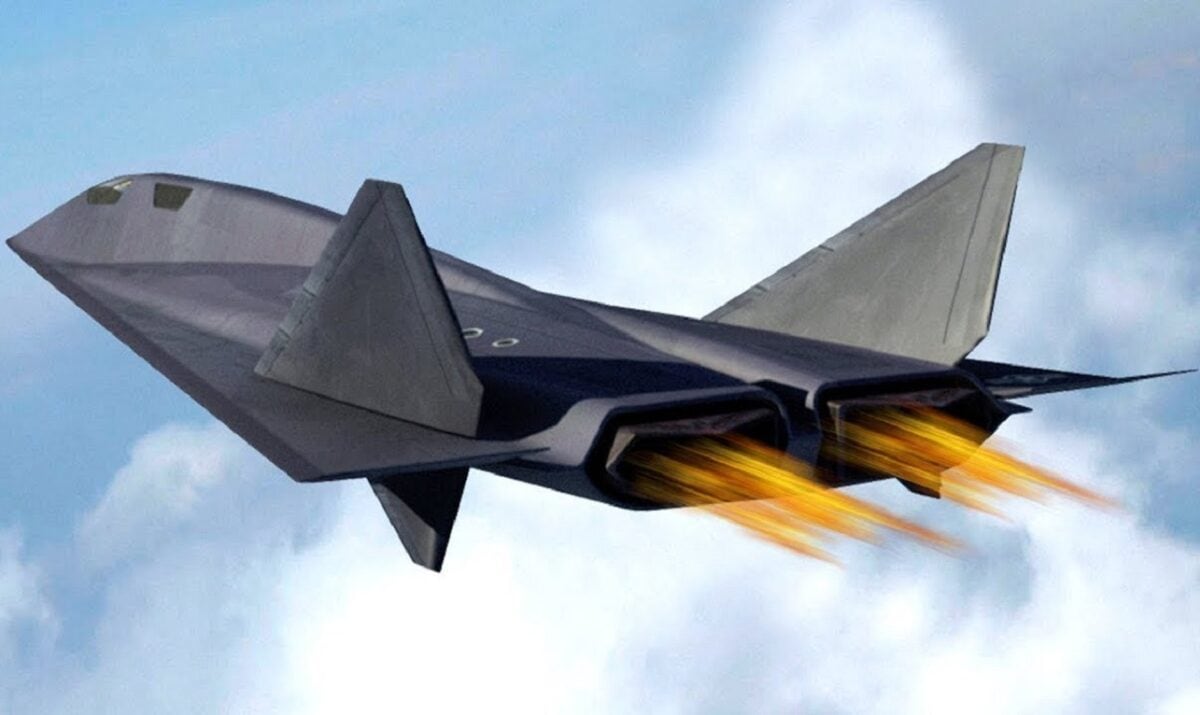
NGAD Artist Rendering (Note: Not a US Government Image).
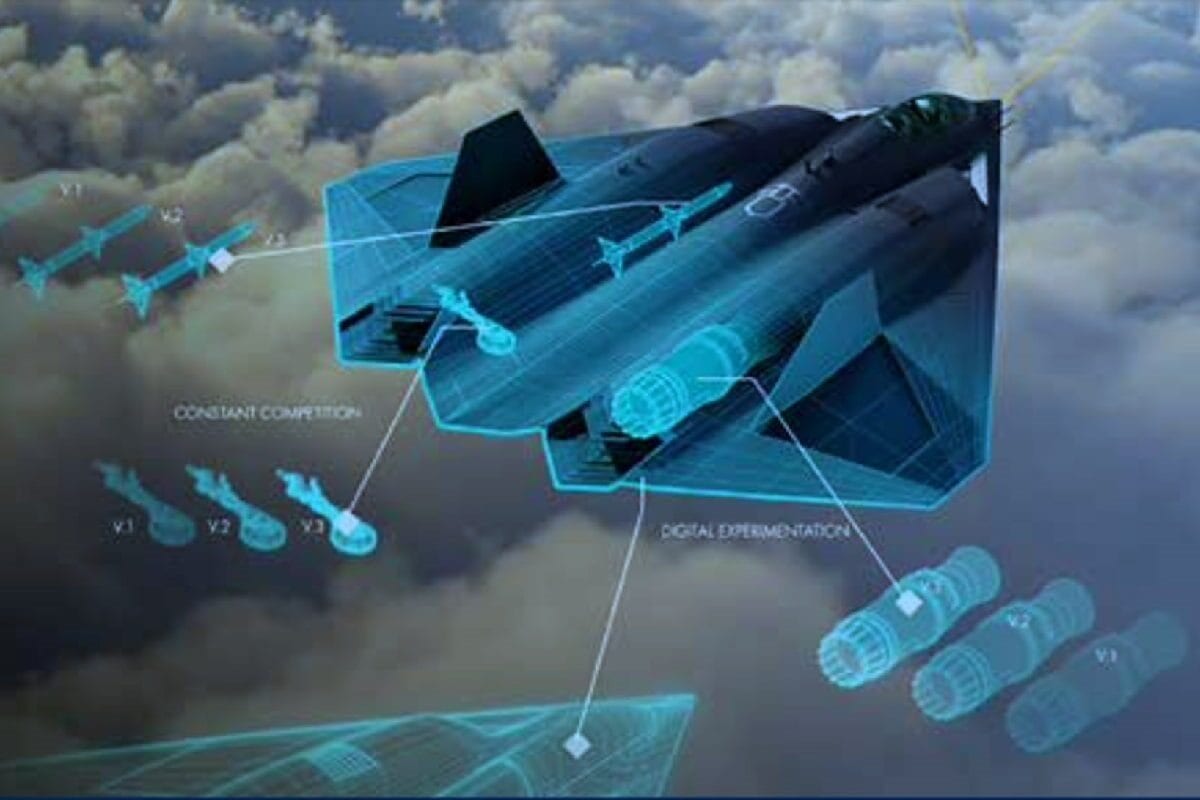
US Air Force image of possible NGAD Concept. Image Credit: US Air Force.
So without any further ado… how would I build the Air Force’s next fighter using the best technology available? Like this…
Overall Design: A delta-like wing with no vertical tail surfaces
This new fighter will need to be able to utterly dominate the skies, but that doesn’t necessarily mean it has to do it in the fashion we’ve come to expect from high-performance fighters. The days of acrobatic, close-quarters dogfights are widely believed to be over thanks to the advent of beyond-visual-range sensors and very capable long-range air-to-air weapons. In other words, this new fighter doesn’t need to be as capable up close as the Su-35 or F-22 Raptor in order to do the job, but it does need to be highly survivable in contested airspace while winning fights against the most capable fighters the world has to offer.
Variations of the delta wing have seen successful use in a number of modern European fighters as well as experimental use in efforts to increase the capabilities of the F-16 (in the F-16XL) and the F-22 Raptor (in the FB-22). The added area of the delta wing dramatically increases the aircraft’s lift, improving payload capabilities and range, while also offering more space for fuel storage, further increasing range or loiter time. Like all stealth aircraft, weapons would be carried internally when prioritizing low-observability, but I’d expect a slightly larger fuselage than the F-22 to allow for greater internal storage, though this aircraft will benefit from using drones to deliver ordnance as well.
Leveraging Active Flow Control with the aircraft’s propulsion system could eliminate the need for many (if not all) of the traditional control surfaces fighters rely on—in particular, this would allow the aircraft to do away with standing vertical tails that can often compromise a stealth jet’s profile. While stealth fighters like the F-22 and F-35 are visible on lower-spectrum radar arrays that serve as effective early warning systems, a design that leans toward the flying wings of the B-2 Spirit and B-21 Raider could help delay detection from even these systems.
Propulsion: Adaptive Cycle Engines like GE’s XA100
The advanced new Adaptive Cycle Engines currently seeing successful tests under both GE and Pratt & Whitney banners (the XA100 and XA101, respectively) are the easy favorites to meet the needs of America’s next air superiority fighter. These engines produce more thrust and power than previous powerplants, while also offering a significant leap in fuel economy and heat management, allowing for greater electrical production.
The XA100 is rated for 45,000 pounds of thrust under afterburner, which could give a two-engine design a whopping 90,000 pounds of thrust on tap (20,000 more than the F-22 Raptor’s two Pratt & Whitney F119-PW-100 turbofan engines). But that’s just the beginning of what makes these engines special.
The XA100 interprets pilot input to operate in different “modes.” When the pilot needs the engine’s peak performance in combat, he or she can lean hard on the throttle and the engine’s management system will take its cue to switch into its heavy-burning high-thrust mode. Conversely, while on a patrol, the engine would stay in its high-efficiency, low-burning mode to stretch its mileage or loiter time. GE’s latest engine tests offered 20% more thrust across most of the flight profile and as much as 50% more fuel economy over the F-35’s existing Pratt & Whitney F135-PW-100s. And just as importantly, it offers double the thermal management capacity of previous engines.
The heat produced by modern jet engines is actually the limiting factor in their ability to produce power for onboard systems. As these engines get hotter, they run the risk of damaging the aircraft itself, but Adaptive Cycle Engines like GE’s XA100 manage heat better, allowing for the electrical-production surpluses that would be necessary to power advanced countermeasures and directed energy weapons.
Active flow and thrust vector control for maneuverability with improved stealth
Perhaps the greatest departure my fighter design would make from the fighters in the sky today is a concerted effort to incorporate Active Flow Control alongside thrust vectoring to dramatically reduce the need for radar-reflecting control surfaces and vertical stabilizers without sacrificing maneuverability. In effect, these systems allow the aircraft to change direction without traditional moving parts like flaps and ailerons (in extreme cases).
One approach to this technology discussed in the American Institute of Aeronautics and Astronautics is routing puffs of air from the aircraft’s jet engines through specific holes in the fuselage to alter the aircraft’s trajectory in flight. It’s basically an extremely advanced and high-speed approximation of how you might see a spacecraft adjust positioning in orbit. Though, use on an aircraft would require far more precise and powerful execution. Another approach published in the Journal of Applied Physics calls for using an array of electrodes on the skin of the aircraft fuselage and wings. These electrodes would produce an electrical discharge at specific intervals and locations to quickly heat up the air nearby, changing the air’s density and in turn, how it affects the flight of the aircraft as it passes over, under, or through.
Some AFC concepts have literally been around for decades. Jumpjets like the AV-8B Harrier have long used a Reaction Control System that works under a similar principle during vertical take-offs and landings, but it wasn’t until recently that technology made the approach feasible for this sort of application without drawing too much power away from an aircraft’s primary means of propulsion. The power surplus allowed by the XA100’s improved thermal management would also help make these systems possible.
Thrust vector control (TVC) allows the pilot to literally aim the outflow of thrust from their aircraft’s engines (independent of the fuselage itself) using nozzles. The F-22 has 180-degree TVC (up and down) while some jets, like the Su-35, have 360-degree TVC. Depending on the efficacy of the AFC system, 360-degree TVC nozzles could supplement aircraft control alongside a minimal number of conventional control surfaces.
Because AFC systems use fewer moving parts, it would mean a reduction in both maintenance costs and the number of seams and gaps in the aircraft’s body that can compromise its stealth signature. If a tail proves necessary, a stealthy angled tail akin to the YF-23’s could be incorporated.
Ceramic Radar Absorbent Materials for improved stealth and supersonic performance
Modern stealth aircraft leverage radar-reflecting designs meant to deflect electromagnetic waves away from the aircraft, rather than directly back at the receiver. But these designs alone aren’t enough to make a modern jet truly “stealthy.” They’re also covered in layers of Radar Absorbing Materials (RAM) that dramatically reduce their radar returns.
The RAM used by modern American fighters has been rated to absorb upwards of 70-80% of inbound electromagnetic energy (or radar waves). But it’s also expensive and time-consuming to maintain (part of the immense expense associated with operating the F-22 and F-35). Current radar absorbing materials are also very susceptible to damage caused by heat, which is a problem at supersonic speeds. In fact, the risk of damaging the radar absorbing material on the tail of the F-35C has limited the aircraft’s supersonic capabilities to short sprints of under just 60 seconds.
Last year, a research team out of North Carolina State University led by Chengying “Cheryl” Xu announced the development of a new ceramic-based radar absorbing material that could be used for tactical fighter applications. This new form of RAM is said to absorb even more electromagnetic energy (upwards of 90%), while also being water-resistant, harder than sand, and able to stand up to temperatures as high as 3,200 degrees Fahrenheit. Modern radar absorbing materials begin to break down at around 480 degrees. Parts of the SR-71 would see temperatures as high as 950 degrees while flying at speeds in excess of Mach 3.
Using this material would allow for maintaining high-supersonic speeds for extended periods of time while dramatically reducing the maintenance requirements for each fighter. In conjunction with the fighter’s other stealthier design elements, this new jet could offer better stealth and performance than previous generation fighters.
Multi-Function Radio Frequency System (MFRFS) radar
oday, it’s commonly accepted that Northrop Grumman’s AN/APG-81 active electronically scanned array (AESA) fire-control radar system, found in the F-35 Joint Strike Fighter, is the most capable in the world. This system provides the F-35 with unmatched situational awareness, but importantly, also carries the necessary power to be leveraged as part of the jet’s electronic warfare suite, making the F-35 the only attack aircraft in the American arsenal that can support its own EW operations.
However, as capable as the F-35’s AESA radar is, a new system being developed in cooperation between the UK and Japan for each nation’s respective 6th generation fighter programs promises to blow even its capabilities out of the water.
Like existing AESA radars that replaced nose-mounted radar dishes with hundreds of small radar modules, this new system (being developed under the name Jaguar) is expected to increase the number of processors per module while also reducing signal degradation by converting incoming signals into data closer to the point of reception. That sentence may be a mouthful, but it’s also a big deal.
What that ultimately means is that this system will be able to absorb and process as much as 10,000 times more data than existing radar systems. According to claims made by the Royal Air Force in 2020, this system would process so much data per second that it could manage the internet usage of an entire city.
An improved Distributed Aperture System (DAS) for even better situational awareness
In 2018, Raytheon took over production of the AN/AAQ-37 DAS system from Northrop Grumman, providing improved image fidelity and stitching together of different feeds, and the next-generation fighter would need to go even further in this direction. There are no current publicly disclosed programs to develop an improved DAS system, but because it’s been four years since the last DAS update, it stands to reason that improved computing power and sensor construction could provide a new fighter with even better situational awareness than the current “quarterback of the sky” F-35.
Modular software and hardware architecture
Drone pairing will allow for easy changes in mission hardware (more on that later) but both the crewed and drone aircraft involved in our new fighter program will need to adopt a modular approach to both hardware and software. Modular construction will allow for a variety of airframe designs to share systems, reducing development and testing costs across the board, as well as sustainment costs once in service.
Modular design architecture allows for more frequent updates at lower price points than current fighter designs. But importantly, the aircraft’s software need to be designed to accommodate these changes in order to fully benefit from a modular construction approach.
This issue was touched upon by Air Force Chief of Staff Gen. CQ Brown just last week, when he highlighted how NGAD’s mission systems will be completely independent of the aircraft’s flight control software. In previous generation fighters, flight controls and mission systems were intertwined, which meant any change to mission systems would require expensive and lengthy testing of the flight systems to ensure changes didn’t compromise the aircraft’s safety or combat capabilities. By separating these two systems, changes can be made to the aircraft’s mission systems without having any effect on the aircraft’s basic functions.
This modular approach to hardware and software will allow for the rapid fielding of new technologies developed by a wider variety of firms, as long as they meet the standard requirements for fit.
An assortment of interchangeable, highly capable drone wingmen
It’s long been understood that the NGAD program isn’t working to field a single aircraft, but rather a “family of systems” that will include support UAVs (unmanned aerial vehicles). While low-cost (attritable) drones like the XQ-58A Valkyrie could prove very effective in this role, I’d be more inclined to lean into statements made by Secretary of the Air Force Frank Kendall earlier this year, where he claimed the target price-point for the NGAD and B-21’s drone wingmen would be around half the cost of the crewed aircraft. With cost estimates currently sitting at around $200 million per fighter for the NGAD, that sets the drone unit cost at around $100 million.
$100 million is, notably, more than the cost of a single F-35A today, which means these support aircraft should be able to offer similar stealth capabilities to America’s existing fighters without going over budget. These drones should share as many commonalities as possible in terms of control systems and body components in the interest of keeping production and maintenance costs low, while still offering very different payloads.
At least three iterations of these drone wingmen should be developed, with a design for each of these specialties:
- Air combat
- Surface combat
- Sensor-reach and Electronic Warfare
The air-combat drone would carry a combination of Lockheed Martin’s in-development AIM-260 JATM long-range air-to-air missile or the Raytheon Long-Range Engagement Weapon (LREW), alongside a number of Raytheon Peregrine missiles. Peregrines are low in cost and occupy much less space than the AIM-9Xs currently in service, despite offering similar capabilities. The surface-combat drone would need to be able to carry a wide variety of air-to-ground and anti-ship munitions, including the AGM-179 JAGM, the new AARGM-ER radar-hunting missile, and the AGM-158C LRASM (Long Range Anti-Ship Missile).
The sensor and EW aircraft would carry the AN/APG-81 Active Electronically Scanned Array (AESA) fire-control radar currently found in the F-35, as well as hardware from the Next Generation Jammer pods being developed for the EA-18G Growler for electronic warfare duties. If it proves too expensive or heavy to equip the air and surface combat drones with the AN/APG-81, Raytheon’s much lighter and cheaper Gallium Nitride-Based AESA would make for a suitable stand-in. Including fire control radar in each drone would be feasible at a high price-point and would ensure mission accomplishment even as drones were lost in combat.
Different specialized designs would allow pilots to change loadouts for a mission by simply swapping paired drones, adding air combat, ground combat, or EW capabilities as necessary based on mission parameters. These drones would take their cues from the pilot through Skyborg or a similar system, leveraging artificial intelligence to execute complex commands received through an encrypted data link with the pilot.
Holographic and Directed Energy missile countermeasures
It’s unclear whether or not new adaptive cycle engines can provide the necessary power for advanced aircraft countermeasures like those discussed below. However, it seems all but certain that these technologies are bound for airborne applications in the not-too-distant future.
Even with improved stealth, this new fighter will still face threats from enemy missiles, whether fired from other aircraft or ground-based launchers, especially as more advanced multi-static radars and infrared-seeking weapons continue to come online. In order to ensure survivability in the contested airspace over 21st-century battlezones, America’s new fighter will need advanced countermeasures to bolster the latest chaff and flare systems already in use.
The first of these systems may well be directed energy weapons, or lasers, that can superheat inbound missiles until they detonate or are too damaged to close with their targets. These systems have been under development for decades, with the Air Force Research Laboratory’s Self-Protect High Energy Laser Demonstrator (SHiELD) program producing the most likely option. It successfully downed a number of air-launched missiles during ground-testing in 2019 and is expected to begin flight-testing in 2024. The SHIELD effort has been focused on pod-contained laser defense systems, but the system itself would be integrated into the fuselage of our new fighter.
Another lesser-known system that would come standard in our new fighter comes in the form of a 2018 Navy patent with the notably un-sexy title, “System and Method for Laser-Induced Plasma for Infrared Homing Missile Countermeasure.” This technology projects “laser-induced plasma filaments,” which are basically plasma holograms that can reproduce the infrared signature of an aircraft hundreds of meters away, confusing inbound heat-seeking missiles.
Although this patent was filed four years ago, there are no current publicly disclosed efforts to develop and field this system for aircraft applications… but because this technology has been demonstrated on smaller scales already, it seems feasible for a classified program aiming for service in the coming decade.
NGAD and the Race to the Future
If you’ve made it all the way through this massive discussion, you’re likely well aware of at least two things: the first is that there is an incredible amount of work involved in designing and fielding a new tactical aircraft like NGAD, and the second is that it’s practically impossible to summarize that endeavor in a single article without painting with some very broad strokes.
The United States has led the world in military aviation technology since the very beginning of aviation itself. The world’s first military aircraft, the 1909 Wright Military Flyer, belonged to the U.S. Army Signal Corps. Less than four decades later, U.S. Air Force Captain Charles “Chuck” Yeager became the first man to pilot an aircraft beyond the sound barrier, and just 14 years after that, Air Force Major Robert White’s X-15 broke the hypersonic barrier, surpassing Mach 6. In 1981, the F-117 Nighthawk ushered in the stealth revolution that has changed America’s very approach to air combat operations, with the globe-spanning B-2 Spirit following behind just eight years down the road.
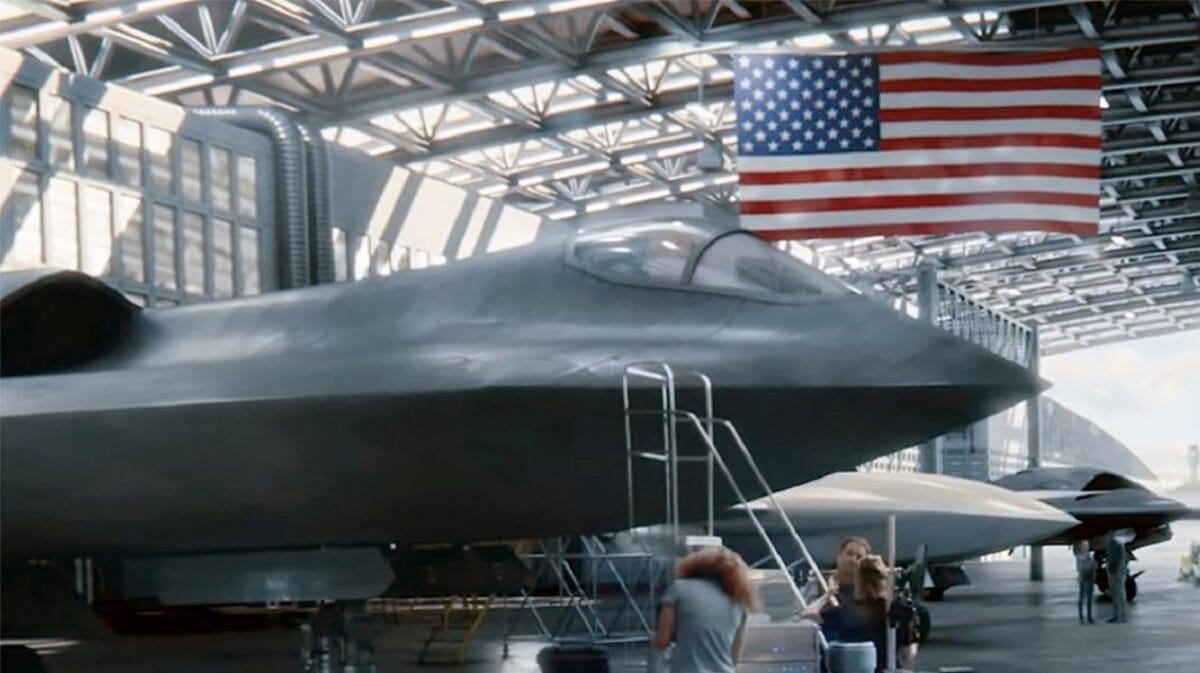
NGAD artist concept from Northrop Grumman.
Then, in 1997, the F-22 Raptor first took flight, offering such incredible new capabilities that it became the archetype for an entirely new generation of fighters that still, some 24 years later, largely fail to live up to its level of capability.
And as we close with the end of this decade, America’s NGAD and FA-XX programs have the real potential to change the game yet again. If they manage to live up to the hype, chances are good they’ll incorporate some of the groundbreaking technologies listed above. Or, at least they would if I were in charge…
Alex Hollings is a writer, dad, and Marine veteran who specializes in foreign policy and defense technology analysis. He holds a master’s degree in Communications from Southern New Hampshire University, as well as a bachelor’s degree in Corporate and Organizational Communications from Framingham State University. This first appeared in SandBoxx news.

